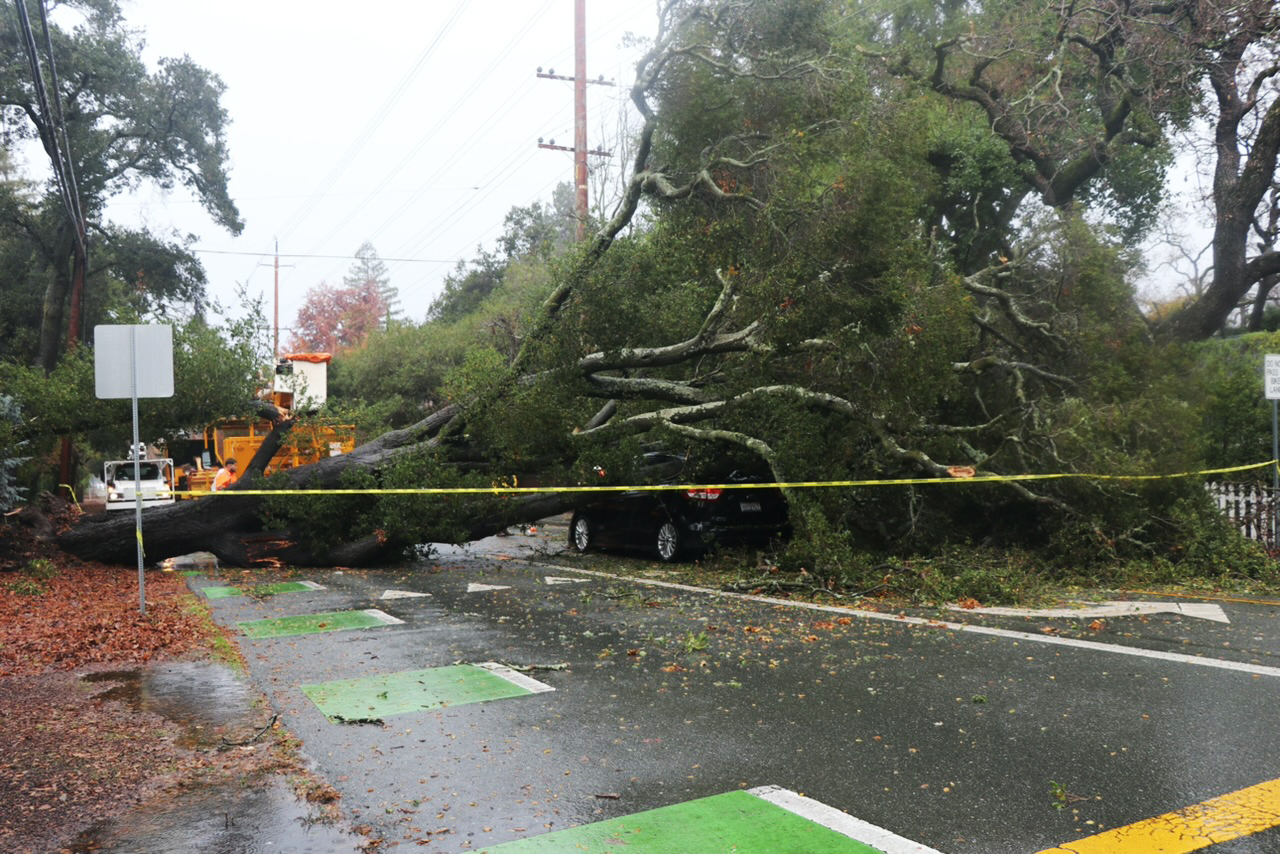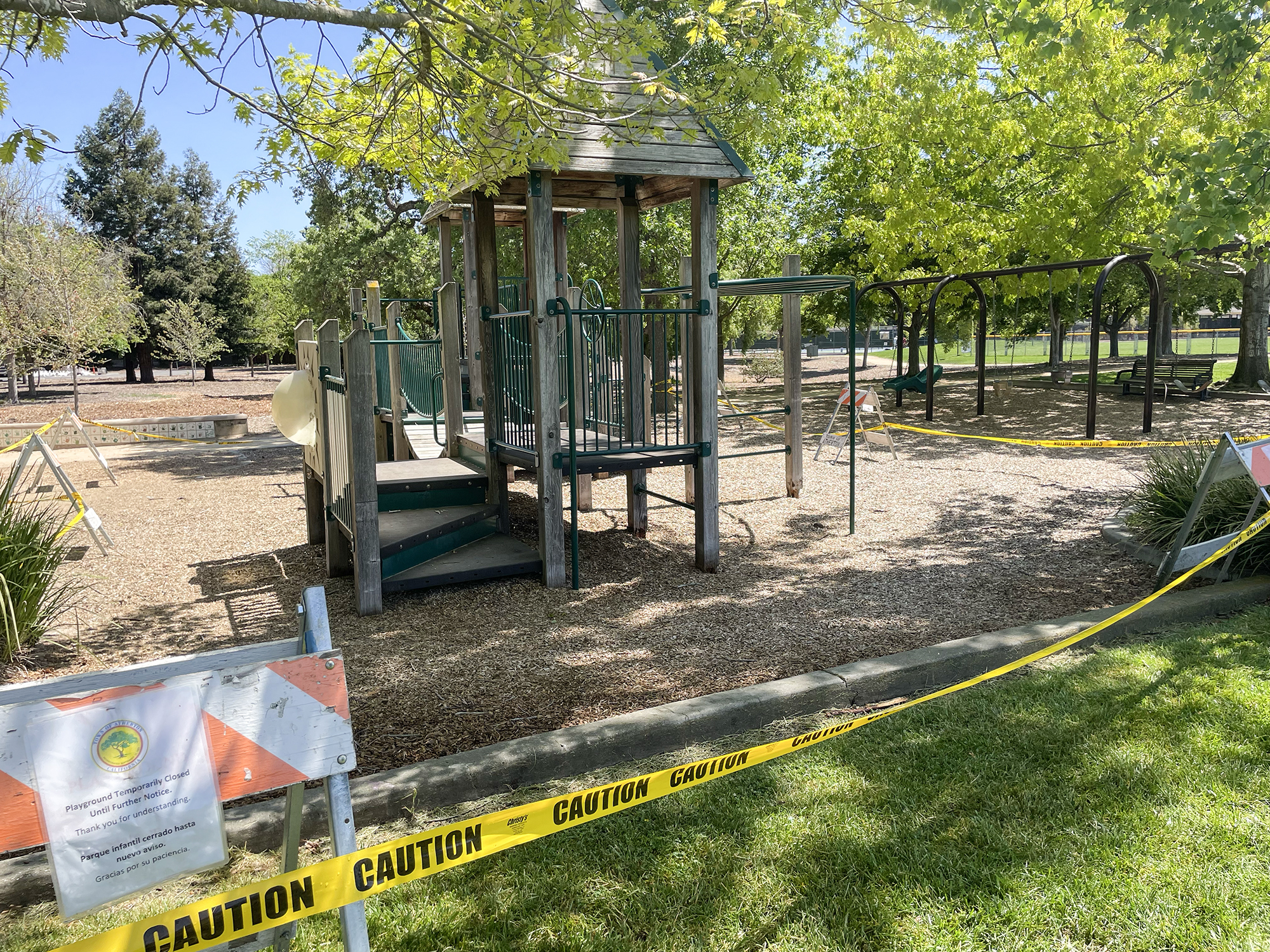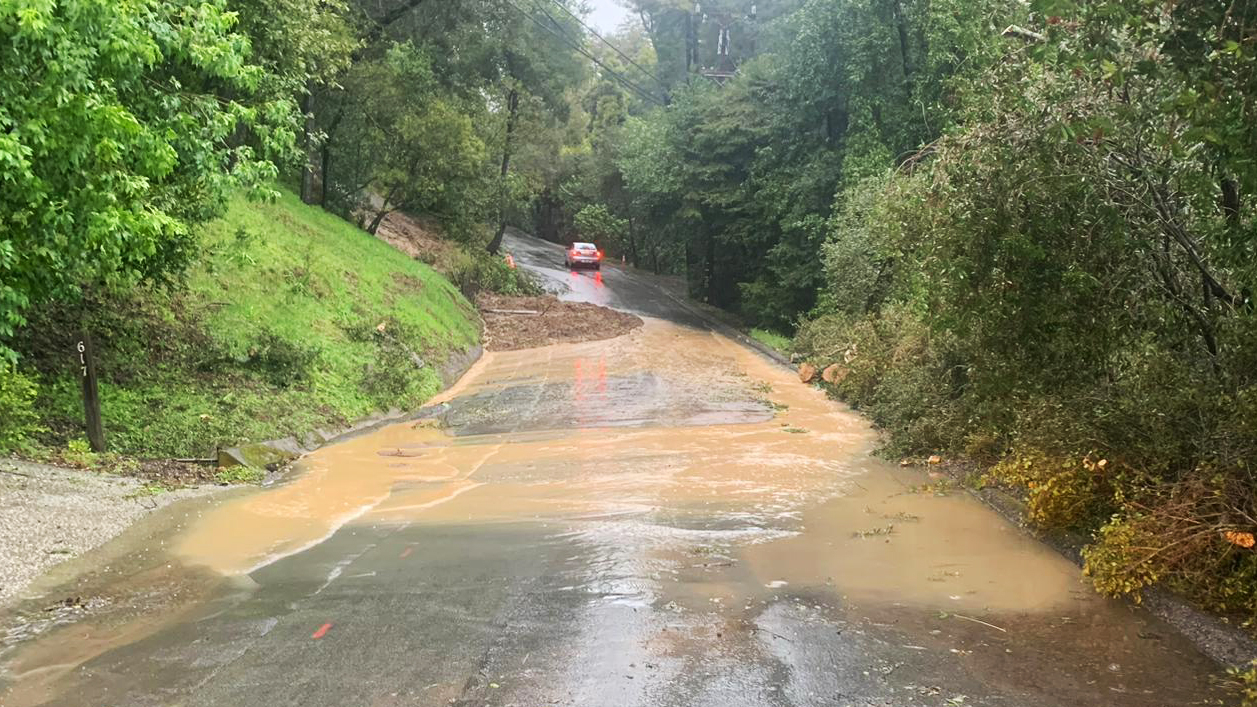Editor's note: This story has been updated to reflect changes to the Portola Valley budget.
Damage from winter storms, the high cost of planning for housing growth and fire mitigation work are hitting the annual budgets of Atherton, Portola Valley and Woodside this fiscal year, which started July 1.
Portola Valley has entered a crisis mode, falling into deficit spending, as its police service costs increase.
Others saw added expenses last fiscal year because of intense winter storms. They also continue to invest in fire mitigation work and are seeing increased costs to plan for state required housing and safety plans.
Portola Valley enters deficit spending
Portola Valley faces financial challenges this fiscal year, including a general fund deficit of about $800,000. Revenue is expected to come in at $8 million. Expenditures are expected to come in at $8.8 million.
Last year, the town expected a $720,096 deficit, in part because of all the expenses tied to planning for the state mandated-housing and safety elements that were due at the end of January.
The biggest increase to the budget, approved by the Town Council on June 27, is a new contact with the San Mateo County Sheriff's Office for police services, which is expected to rise from around $1.5 million last fiscal year to $2.3 million.
"This 59% increase results from a cost recovery study by San Mateo County, which identified that the communities contracting for services with the sheriff were not paying the full cost of the service," according to a memo from Interim Town Manager Howard Young. "While the objective of full cost recovery is fair, the abrupt increase requires both an immediate and long-term response."
In the short term, staff proposes using American Rescue Plan Act (ARPA) funds to offset the cost. To date, the county has offered to reduce the first year cost increases by about $200,000. In combination with the use of ARPA funds of about $400,000 this reduces the impact to the general fund by around $600,000.
The town has been working with the county and the Sheriff's Office to reach agreement on the contract. The council is set to vote on Wednesday, July 12, to extend the contract to Dec. 31. It expired in June, but last month it was extended to September.
The magnitude of the deficit requires swift action to rebalance services and pursue new revenue sources (such as a parcel tax or utility user tax and fees), according to town officials. Pursuing these remedies will need to be a focus in the upcoming year.
"The use of fund balance is not sustainable, requiring thoughtful consideration on how to rebalance services and identify new revenue sources," Young said.
The 2023-24 budget originally included $1.16 million for road resurfacing projects, but funds going toward capital improvement projects had to be reduced because the town was looking at a nearly $1.6 million deficit.
No new staff positions are recommended this year, although employee costs increased by about $300,000 due to benefit changes and salary increases. Other significant changes in the general fund budget include:
• An increase in the town attorney budget from $140,000 to $300,000
• An increase for planning and housing assistance for $85,000
• A budget of $130,000 for post-housing element work identified by Council members Judith Hasko and Craig Taylor
Atherton budget is healthy
For the 2023-24 budget, Atherton's general fund revenues are projected at almost $21.5 million and expenditures are expected to be $19.3 million, according to a June 21 council meeting agenda packet. The majority of the town's revenue, around $15 million, comes from property taxes. The City Council approved the budget at the June meeting.
"With the completion of the Town Center, focus is shifting to other capital projects needs in the town," said City Manager George Rodericks in a June 21 staff report.
Notably, the Planning Department budget increased by about $888,000 because of a new town planning services consultant and one-time programmatic expenditures related to the various general plan updates, such as the state-mandated safety element and housing element, and associated zoning code updates.
The anticipated increase in the planning department operating budget includes a $426,000 increase for contract planner hours and a $456,000 increase of one-time costs for housing element updates, including environmental reviews, objective design standards, general plan safety update and modifications to the accessory dwelling unit (ADU) ordinance and implementation program.
Priorities this fiscal year include updates to Holbrook-Palmer Park and traffic safety improvement projects.
Priorities in the coming years include working on projects in the town's bicycle and pedestrian master plan, drainage improvement plans, along with green infrastructure within road and maintenance projects. Some $1.9 million will go toward traffic safety improvements; $1.3 million to the bicycle and pedestrian program; $1.6 million for road maintenance; $3.3 million for drainage improvements; and $300,000 for park improvements.
The police department budget will decrease by about $240,000, due to some retirements.
The council has also discussed park playground improvements, increasing the 2024-25 look ahead budget from $500,000 to $1 million.
Woodside focuses attention on fixing roads and fire mitigation
Woodside is estimated to bring in general fund revenues of $11.2 million in 2023-24. Expenditures are projected to come in at $10.9 million, according to the budget approved in June.
Emergency response to the winter storms cost the town $400,000 during the 2022 fiscal year and led to the temporary closure of Highway 84 between Portola Road and Fox Hill Road. Winter storm repairs cost $300,000 last fiscal year and are expected to cost the town $80,000 this fiscal year. The town received about $660,000 for a FEMA hazard mitigation grant.
The road closure has put an additional burden on the town's streets, most notably Old La Honda Road, said Town Manager Kevin Bryant. The town is also grappling with planning for state-mandated housing over the next eight years.
"These major challenges remind us that Woodside is not an island and that external forces will have an impact on what we do locally," he wrote in a June 7 memo. "It is important that we do our very best on behalf of the residents and businesses of the town to keep Woodside the oasis within the Bay Area that it has long been."
The town's Planning Department has three major projects in the docket: getting its housing element certified by the state, updating its town center area plan and identifying hurdles to development in the Western Hills neighborhood. The last project will employ the lessons learned from a similar project previously completed in the Glens neighborhood.
The town spent a significant amount of money — $325,000 — during the last fiscal year on housing and town center plans. It expects to spend less, $200,000, during the 2023 year, and $100,000 during the 2024 year.
Property taxes are expected to bring in an additional roughly $300,000 from the 2022 year.
Bryant recommended the creation of two new positions to address compliance with state regulations: a second senior management analyst and a records manager.
Fire mitigation is also part of the town's budget.
New this year is for funding for a grant writer position ($30,000 for the 2023 and 2024 fiscal years) that will be funded by the towns of Woodside and Portola Valley, and the Woodside Fire Protection District to seek out additional opportunities for wildfire preparation.
The proposed budget includes $350,000 in each of the next two fiscal years to fund a program that reimburses property owners up to $3,000 for fire fuel load reduction and/or specific home hardening activities on their property.
The state can provide around $660,000 to support about $880,000 of hazardous tree removal within the town.






Comments